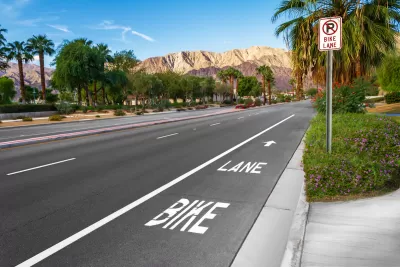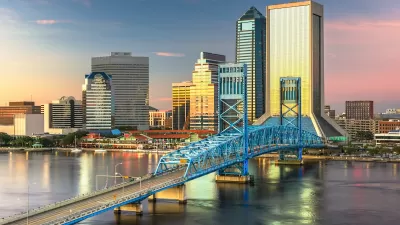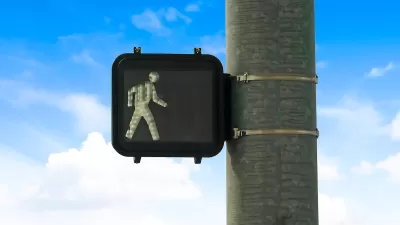Often car-centric, these cities in the South and West are working to make their roads safer for pedestrians, cyclists, and transit riders.

As their populations—and the number of pedestrian deaths—grow, Sun Belt cities Jacksonville Tucson and Memphis are rethinking their transportation planning strategies to improve safety and mobility for their residents. An article by Dan Zukowski, Julia Himmel, and Shaun Lucas in Smart Cities Dive reveals that “Nine of the 10 most dangerous states for pedestrians are in the Sun Belt, according to a 2022 Smart Growth America report.”
The article describes the road safety efforts that three cities—Tucson, Jacksonville, and Los Angeles. In Tucson, “The city is now looking to introduce ‘road diets’ with bikeways and safer crossings, thus reducing and slowing traffic for a ‘better pedestrian experience on those roadways as well as reducing vehicular crashes,’” according to its Complete Streets program coordinator.
In car-centric Jacksonville, “The [Jacksonville Transportation Authority] is working with the city of Jacksonville, the North Florida Transportation Planning Organization and the Florida Department of Transportation to focus road construction more on people and less on automobiles as they build additional roadways” by improving pedestrian and bike infrastructure along transit corridors, among other projects.
In Los Angeles, where half of the county’s fatal and severe-injury crashes occur on 4 percent of roads, “DPW is implementing tactics to improve pedestrian safety that include curb extensions to slow vehicles making right turns, high-visibility crosswalks and traffic signals that give pedestrians extra time.” Thanks to new flexibility created by a state law that allows cities to adjust speed limits for safety, Los Angeles lowered speed limits on 177 miles of road in 2022.
FULL STORY: Can Sun Belt cities go from danger zones to pedestrian-friendly?

Planetizen Federal Action Tracker
A weekly monitor of how Trump’s orders and actions are impacting planners and planning in America.

San Francisco's School District Spent $105M To Build Affordable Housing for Teachers — And That's Just the Beginning
SFUSD joins a growing list of school districts using their land holdings to address housing affordability challenges faced by their own employees.

The Tiny, Adorable $7,000 Car Turning Japan Onto EVs
The single seat Mibot charges from a regular plug as quickly as an iPad, and is about half the price of an average EV.

Seattle's Plan for Adopting Driverless Cars
Equity, safety, accessibility and affordability are front of mind as the city prepares for robotaxis and other autonomous vehicles.

As Trump Phases Out FEMA, Is It Time to Flee the Floodplains?
With less federal funding available for disaster relief efforts, the need to relocate at-risk communities is more urgent than ever.

With Protected Lanes, 460% More People Commute by Bike
For those needing more ammo, more data proving what we already knew is here.
Urban Design for Planners 1: Software Tools
This six-course series explores essential urban design concepts using open source software and equips planners with the tools they need to participate fully in the urban design process.
Planning for Universal Design
Learn the tools for implementing Universal Design in planning regulations.
Smith Gee Studio
City of Charlotte
City of Camden Redevelopment Agency
City of Astoria
Transportation Research & Education Center (TREC) at Portland State University
US High Speed Rail Association
City of Camden Redevelopment Agency
Municipality of Princeton (NJ)





























